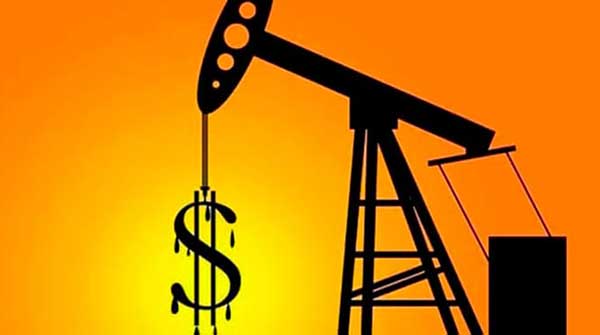OPEC and IEA clash on the future of global oil demand amid skyrocketing prices
 Oil prices surged last week, reaching their highest level of the year, with some experts suggesting the possibility of hitting $100 a barrel before year-end. The price rally was driven by growing expectations of a tightening supply, as Saudi Arabia and Russia decided to draw down global inventories and extend their oil output cuts through to the end of the year.
Oil prices surged last week, reaching their highest level of the year, with some experts suggesting the possibility of hitting $100 a barrel before year-end. The price rally was driven by growing expectations of a tightening supply, as Saudi Arabia and Russia decided to draw down global inventories and extend their oil output cuts through to the end of the year.
The Paris-based International Energy Agency (IEA) highlighted in a recent report that the “Saudi-Russian alliance is proving a formidable challenge for oil markets.” Independent analysts are now predicting that due to strong demand, limited supplies, and a lack of tools available to the U.S. government to control prices, oil might breach the US$100 mark in the weeks ahead.
“Global oil demand is at record highs,” Al Salazar, an analyst at Enverus Intelligence Research, was quoted as saying. “We’ve never used this much (oil), and OPEC is cutting production in the face of it. The third component is crude and product stocks are relatively low,” adding, “The simple maths means $100 Brent.”
Commodity analysts at Standard Chartered are projecting a significant drop – by 313 million barrels – in global inventories in the second half of 2023, not ruling out the possibility of oil prices exceeding US$100 per barrel in late Q4. Bank of America shared a similar view, attributing the potential price increase to the extension of output cuts by Saudi Arabia and Russia.
This shift in supply and demand dynamics has sparked a conflict between the OECD energy watchdog, the IEA, and OPEC. IEA’s executive director, Fatih Birol, giving a hint in a Financial Times commentary about what could be expected in its much anticipated upcoming World Energy Outlook, stated that the world is approaching the end of the fossil fuel era.
“The age of seemingly relentless growth” for fossil fuel demand is at the beginning of the end, Birol, the current guru of the energy world, underlined. “This is the first time that a peak in demand is visible for each fuel (oil, gas and coal) this decade – earlier than many people (had) anticipated.” He emphasized in his commentary that the peak in demand is being driven by the rapid growth of clean energy technologies such as solar panels and electric vehicles, shifts in China’s economy, and global energy crisis repercussions.
The IEA projection, however, earned a harsh rebuke from OPEC. In a sharply worded response to Birol’s commentary, OPEC Secretary General Haitham al-Ghais accused the IEA of ideologically driven fearmongering that would destabilize the world economy. “Such narratives only set the global energy system up to fail spectacularly,” Ghais said in a Sept. 14 statement. “It would lead to energy chaos on a potentially unprecedented scale, with dire consequences for economies and billions of people across the world.”
OPEC and the IEA have been differing with each other strongly on market fundamentals. The IEA has previously criticized production cuts by OPEC and its allies, accusing it of exacerbating the energy crisis and driving up inflation. OPEC, however, believes that the output cuts were made to stabilize the oil market.
As per S&P Global, OPEC officials have also blasted the IEA’s net-zero advocacy, including a warning that no oil and gas projects should be sanctioned to achieve UN climate goals, with Saudi energy minister Prince Abdulaziz bin Salman ridiculing the agency as living in “la la land.”
In their latest monthly oil market reports, OPEC and the IEA also differed markedly on forecasts for global oil demand this year and next. In its report published on Tuesday, OPEC expected world oil demand to rise robustly by 2.44 million barrels per day (bpd) in 2023 and by 2.25 million bpd in 2024, citing “solid global economic growth.”
However, the IEA said in its September market report that although global oil demand would grow by 2.2 million bpd this year, growth would slow sharply to one million bpd next year as “the recovery runs out of steam and with efficiency gains, EV penetration and working from home further suppressing consumption.”
The debate is on. The outcome of this heated debate will have far-reaching consequences, and the world will have to wait for the results over the next few years.
Toronto-based Rashid Husain Syed is a highly-regarded analyst specializing in energy and politics, with a particular emphasis on the Middle East. Besides his contributions to both local and international newspapers, Rashid frequently lends his expertise as a speaker at global conferences. His insights on global energy matters have been sought after by organizations such as the Department of Energy in Washington and the International Energy Agency in Paris.
For interview requests, click here.
The opinions expressed by our columnists and contributors are theirs alone and do not inherently or expressly reflect the views of our publication.
© Troy Media
Troy Media is an editorial content provider to media outlets and its own hosted community news outlets across Canada.

